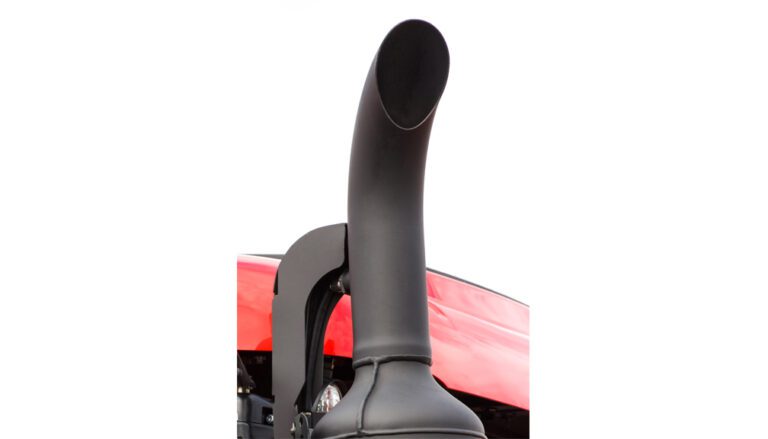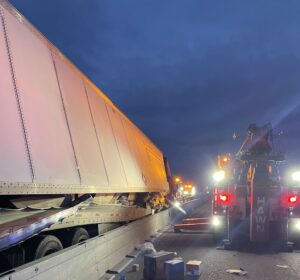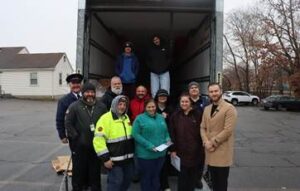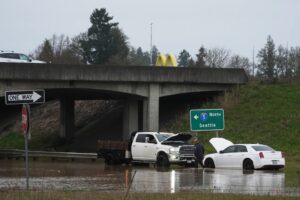WASHINGTON — The Biden administration is proposing lower limits for a deadly air pollutant, saying tougher standards for soot from tailpipes, smokestacks and wildfires could prevent thousands of premature deaths a year.
A proposal released Friday by the Environmental Protection Agency would set maximum levels of nine to 10 micrograms of fine particle pollution per cubic meter of air, down from 12 micrograms set a decade ago under the Obama administration. The standard for particle pollution, more commonly known as soot, was left unchanged by then-President Donald Trump, who overrode a scientific recommendation for a lower standard in his final days in office.
In a development that could lead to an even lower standard, the EPA said it also would take comments on a range of ideas submitted by a scientific advisory committee, including a proposal that would lower the maximum standard for soot to 8 micrograms. A microgram is one-millionth of a gram.
CLEAN TRUCKS PLAN
Established in 2021 as a way to reduce greenhouse gas (GHG) emissions from heavy-duty rigs through a series of rulemakings over the next three years, EPA’s Clean Trucks Plan would result in significant emissions reductions from new medium-and heavy-duty vehicles and will be major steps towards improving air quality and addressing the climate crisis.
The regulatory actions that make up the Clean Trucks Plan are as follows:
- Setting stronger nitrogen oxide (NOx) standards for heavy duty trucks beginning in model year (MY) 2027 and tightening the Phase 2 GHG emissions for MY 2027 and beyond.
- Setting stronger emissions standards for medium-duty commercial vehicles for MY 2027 and later. These revised standards will be proposed in combination with new standards for light-duty vehicles for MY 2027 and beyond.
- Setting Phase 3 GHG standards for heavy-duty vehicles beginning as soon as MY 2030 that are significantly stronger than the MY 2027 GHG standards.
EPA Administrator Michael Regan said the proposal to strengthen the national ambient air quality standards for fine particle pollution would help prevent serious health problems, including asthma attacks, heart attacks and premature death that disproportionately affect vulnerable populations. Those populations include children, older adults and those with heart and lung conditions as well as low-income and minority communities throughout the United States.
“This administration is committed to working to ensure that all people, regardless of the color of their skin, the community they live in or the money in their pocket, have clean air to breathe, clean water to drink and the opportunity to lead a healthy life,″ Regan said at a news conference. “At EPA, we are working every single day to create cleaner and healthier communities for all and have been doing so for over 50 years.″
Environmental and public health groups have been pushing for a stronger standard for what is broadly called “fine particulate matter,” the tiny bits of soot we breathe in unseen from tailpipes, wildfires, factory and power plant smokestacks and other sources.
Harold Wimmer, the president of the American Lung Association, called the EPA’s proposal disappointing, saying it is “inadequate to protect public health from this deadly pollutant.″
“Current science shows that stronger limits are urgently needed … to protect vulnerable populations,″ Wimmer said, calling for the EPA to lower the standard to 8 micrograms or lower.
Seth Johnson, an attorney for the environmental group Earthjustice, called the EPA plan “a disappointment and missed opportunity overall.″ While it would strengthen some public health protections, “EPA is not living up to the ambitions of this administration to follow the science, protect public health and advance environmental justice,” Johnson said. He urged the EPA “to hear communities, not industrial polluters, and strengthen this rule. Overburdened communities have the right to breathe clean air.”
EPA scientists have estimated exposure at current limits causes the early deaths of thousands of Americans annually from heart disease and lung cancer as well as causing other health problems.
Dr. Doris Browne, president of the National Medical Association, the oldest and largest national organization representing African American physicians, hailed the EPA’s proposal as “the bold action needed to protect public health across the country.″
Appearing with Regan at a news conference, Browne said the proposal is likely to have lasting benefits across the country “but especially for those communities of color and low-income communities that experience the increase in particulate matter pollution.” Smog, soot and other pollution near factories, power plants and other hazards has a “devastating impact on public health,″ she said.
A 2022 report by the American Lung Association found that 63 million Americans live in counties that experience unhealthy daily spikes in soot pollution and 21 million live in counties that exceed annual limits for soot pollution. Most of those counties were in 11 Western states, the report said. People of color were 61% more likely than white people to live in a county with unhealthy air quality, the report said.
Fresno, California, displaced Fairbanks, Alaska as the metropolitan area with the worst short-term particle pollution, the report found, while Bakersfield, California, continued in the most-polluted slot for year-round particle pollution for the third year in a row.
The EPA will accept comments on the proposed rule through mid-March and will hold a virtual public hearing over several days. A final rule is expected this summer.
The Trucker Staff contributed to this report.
The Associated Press is an independent global news organization dedicated to factual reporting. Founded in 1846, AP today remains the most trusted source of fast, accurate, unbiased news in all formats and the essential provider of the technology and services vital to the news business. The Trucker Media Group is subscriber of The Associated Press has been granted the license to use this content on TheTrucker.com and The Trucker newspaper in accordance with its Content License Agreement with The Associated Press.
















Is this really settled science? Where are studies to the contrary? Please present a more balanced report so that readers don’t leave with a one-sided, sky-is-falling view of the affects of this “soot” on the poor and “people of color.”
The trucking industry is being squeezed towards the Electric Power Autonomous Semi Trucks ? So “Drivers Beware ” you are being phased out !” Large Cars ” also your Days are Numbered so if you thinking about a brand new Large Car 389 model / W900 /200k truck you probably will never finish paying it off before it will be obsolete ? Just Something to think about ?
try regulating contaner ships in stead you stupid ass fucks you are going to kill the trucking industry dumb assholes and then no one will be able to live
Biden admin wants to ban gas kitchen cooking stoves.
(1) 40% more electric stoves to the grid
(2) Electric vehicles to the grid(TRUCKS< CARS < PICKUPS
THE GRID CAN'T HANDLE THE DEMAND NOW
THE BIDEN ADMINISTRATION (DENONRATS) IS TRYING TO DESTROY THIS COUNTRY.
IF YOU DRIVE A TRUCK FOR A LIVING YOUR JOB IS IN JEOPARDY!!!!!!!!!!!!
THANK DEMCRATS